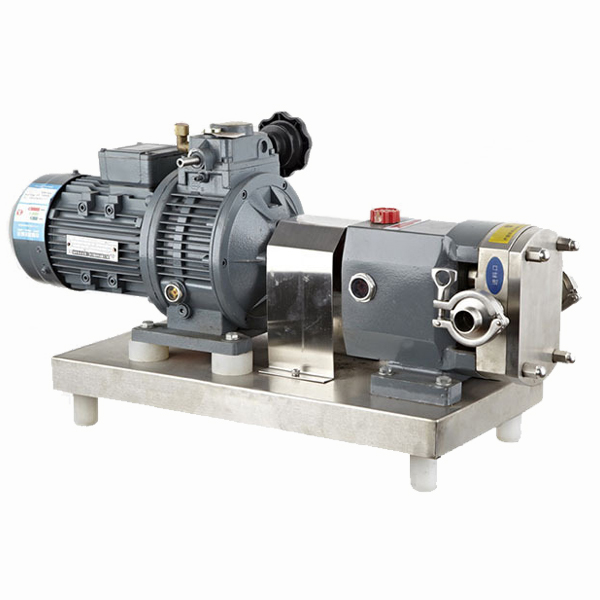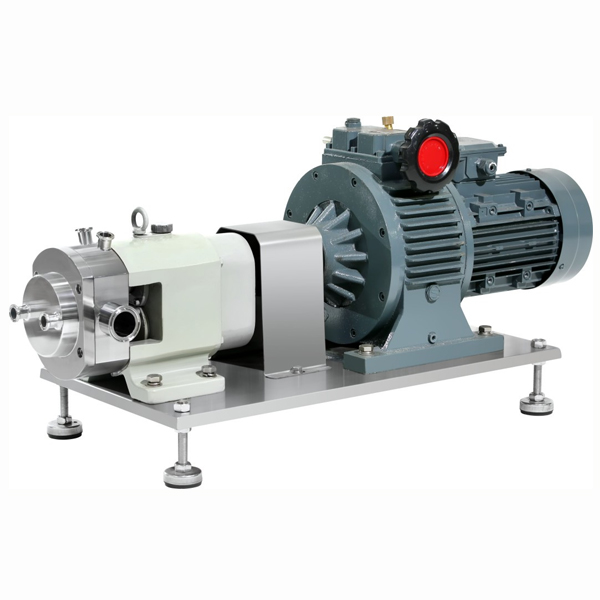Views: 0 Author: Site Editor Publish Time: 2025-02-20 Origin: Site








A rotor pump is a highly efficient positive displacement pump used in industries such as food processing, pharmaceuticals, chemicals, and wastewater treatment. It is known for its ability to handle high-viscosity, shear-sensitive, and solid-laden fluids while maintaining a consistent flow rate. However, to ensure long-term efficiency, reliability, and durability, regular maintenance and servicing are essential.
JUSH Pump, a leading manufacturer of rotor pumps, provides high-quality solutions for industrial applications, ensuring that their pumps operate at peak performance with minimal downtime. In this article, we will discuss essential maintenance and service procedures for a rotor pump, helping users extend the lifespan of their equipment.


Proper maintenance and servicing of a rotor pump can provide the following benefits:
Increased lifespan – Regular inspections prevent premature wear and tear.
Optimal performance – Ensures smooth fluid transfer without loss of efficiency.
Reduced downtime – Prevents unexpected failures and costly production halts.
Lower repair costs – Early issue detection reduces expensive repairs.
Compliance with hygiene standards – Especially crucial in food, beverage, and pharmaceutical industries.
Understanding how to maintain and service your rotor pump ensures trouble-free operation and maximized productivity.
Regular maintenance helps identify potential issues before they cause serious problems. Below is a comprehensive routine maintenance checklist:
Frequent visual and functional checks help detect early signs of wear and damage. Key components to inspect include:
Rotors and lobes – Check for signs of erosion, wear, or damage that could affect efficiency.
Seals and gaskets – Ensure they are intact to prevent leakage and contamination.
Bearings and shafts – Examine for misalignment, cracks, or excessive wear.
Pump housing – Look for corrosion, cracks, or material buildup that could impact performance.
O-rings and elastomers – Inspect for swelling, cracks, or brittleness.
JUSH Pump recommends performing a thorough inspection every 500 hours of operation or at least once a month, depending on application demands.
Proper lubrication is critical for reducing friction and preventing overheating. Key maintenance tasks include:
Checking lubricant levels – Low lubrication can cause bearing failure and excessive wear.
Replacing lubricants periodically – Follow manufacturer guidelines for oil and grease replacement.
Inspecting the cooling system – Ensure cooling channels and heat exchangers are free from blockages.
Using high-quality lubricants from JUSH Pump ensures optimal performance and long-lasting operation.
A clean rotor pump prevents buildup, blockages, and contamination, which is especially important in food, beverage, and pharmaceutical industries.
Use CIP (Clean-in-Place) or SIP (Sterilize-in-Place) systems for hygienic applications.
Flush the pump with water or appropriate solvents after processing sticky or viscous fluids.
Disassemble and manually clean when handling abrasive or solid-laden materials.
JUSH Pump designs CIP-compatible rotor pumps, making cleaning and sterilization easier and more efficient.
Leaks can cause fluid loss, contamination, and pump inefficiency. To prevent leaks:
Inspect seals and mechanical components for cracks, erosion, or misalignment.
Tighten loose bolts and fittings to ensure a secure pump assembly.
Replace worn-out seals promptly to prevent potential damage to other pump components.
JUSH Pump offers durable, high-performance seals to minimize leakage risks.
Keeping track of key performance indicators (KPIs) can help detect early signs of inefficiency. These include:
Flow rate – Any decrease in output may indicate clogging or rotor wear.
Pressure fluctuations – Inconsistent pressure may result from air leaks or seal failures.
Energy consumption – A sudden increase in power usage could signal mechanical inefficiencies.
Unusual noises or vibrations – Could indicate bearing failure, misalignment, or loose components.
Using smart monitoring systems from JUSH Pump allows for real-time diagnostics and predictive maintenance.
In addition to regular maintenance, scheduled servicing is necessary to replace worn-out components and ensure long-term performance.
For comprehensive servicing, a rotor pump should be disassembled, inspected, and cleaned at least once a year. Key steps include:
Removing the pump housing to inspect internal components.
Checking rotors for damage, pitting, or excessive wear.
Examining seals, bearings, and shafts for signs of fatigue.
Cleaning all components thoroughly before reassembly.
Timely replacement of worn parts ensures that the pump remains efficient and reliable. Components that may require replacement include:
Rotors and lobes – If clearance increases or flow rate decreases, new rotors are needed.
Seals and gaskets – Prevent fluid leaks and maintain optimal pump efficiency.
Bearings and shafts – Essential for smooth mechanical operation.
Pump casing – If corroded or cracked, replacement is necessary to avoid leaks.
JUSH Pump provides genuine replacement parts, ensuring compatibility and extended service life.
Once servicing is complete:
Calibrate the pump to restore optimal flow and pressure levels.
Reassemble all components carefully, following manufacturer guidelines.
Perform a dry-run test to check for any irregularities before resuming operation.
JUSH Pump offers expert servicing and calibration to maintain precision and efficiency.
How often should I service my rotor pump?
Routine inspections should be done monthly, while full servicing should occur at least once a year, depending on usage.
What are the signs that my rotor pump needs maintenance?
Look for reduced flow rates, unusual noises, leaks, pressure fluctuations, or increased energy consumption.
Can I use any lubricant for my rotor pump?
No. Use manufacturer-recommended lubricants, as improper lubrication can damage bearings and seals.
How do I prevent contamination in food and pharmaceutical applications?
Ensure your rotor pump is CIP/SIP compatible, use hygienic seals, and follow strict cleaning protocols.
What should I do if my rotor pump is leaking?
Check seals, gaskets, and fittings for wear or misalignment, and replace damaged parts immediately.
A rotor pump is a highly efficient and durable pumping solution for various industries, but proper maintenance and servicing are essential to keep it running smoothly. By following routine inspections, lubrication, cleaning, and timely part replacements, users can extend the lifespan of their pumps while maintaining optimal performance.
JUSH Pump provides expert maintenance services, spare parts, and advanced rotor pump solutions, ensuring minimal downtime and maximum efficiency. Contact JUSH Pump today for professional servicing and technical support!